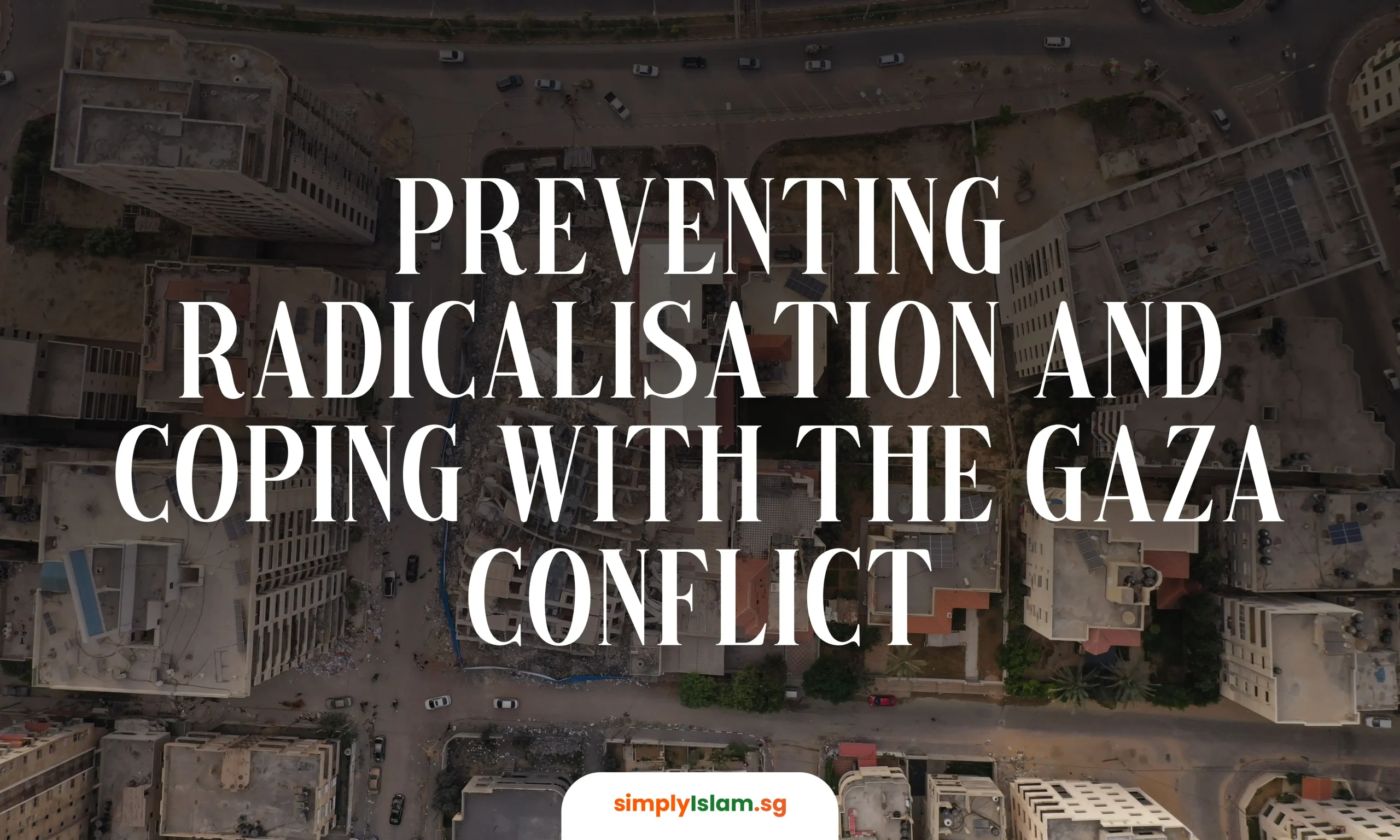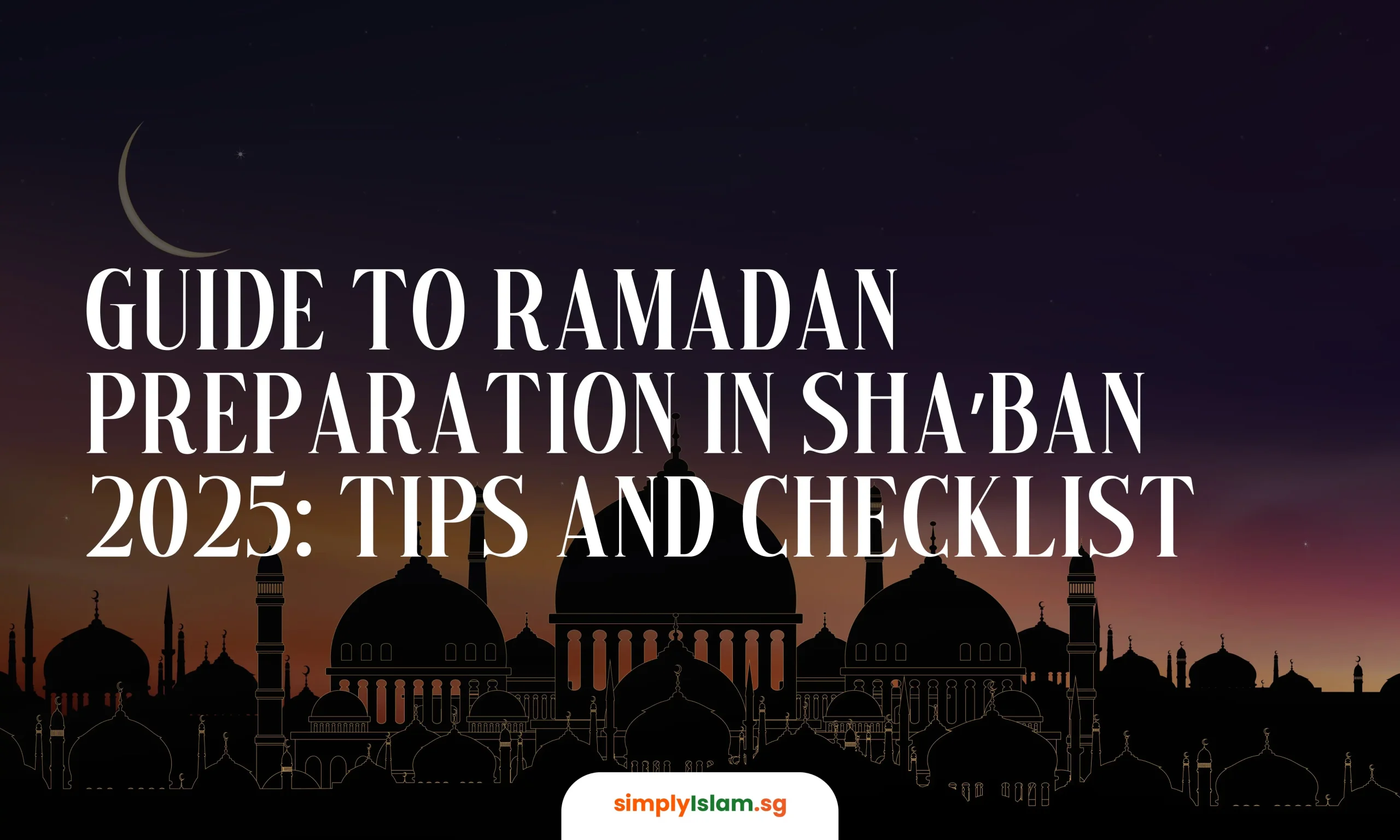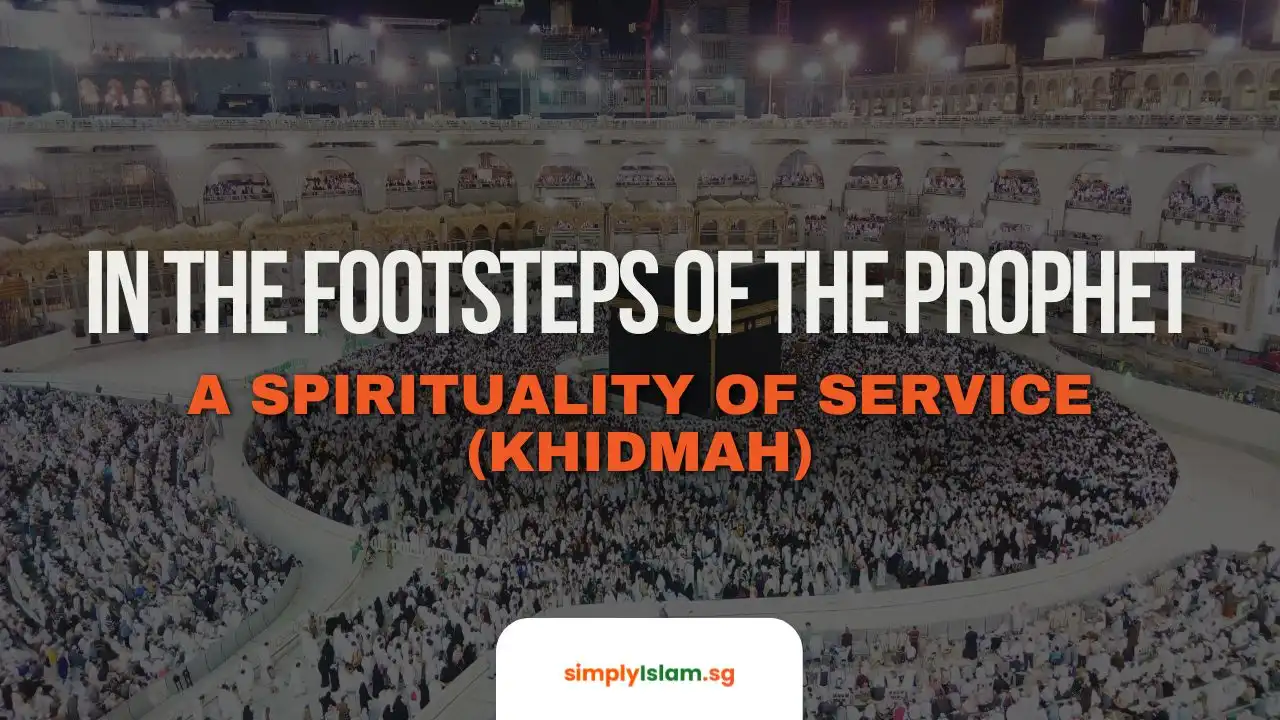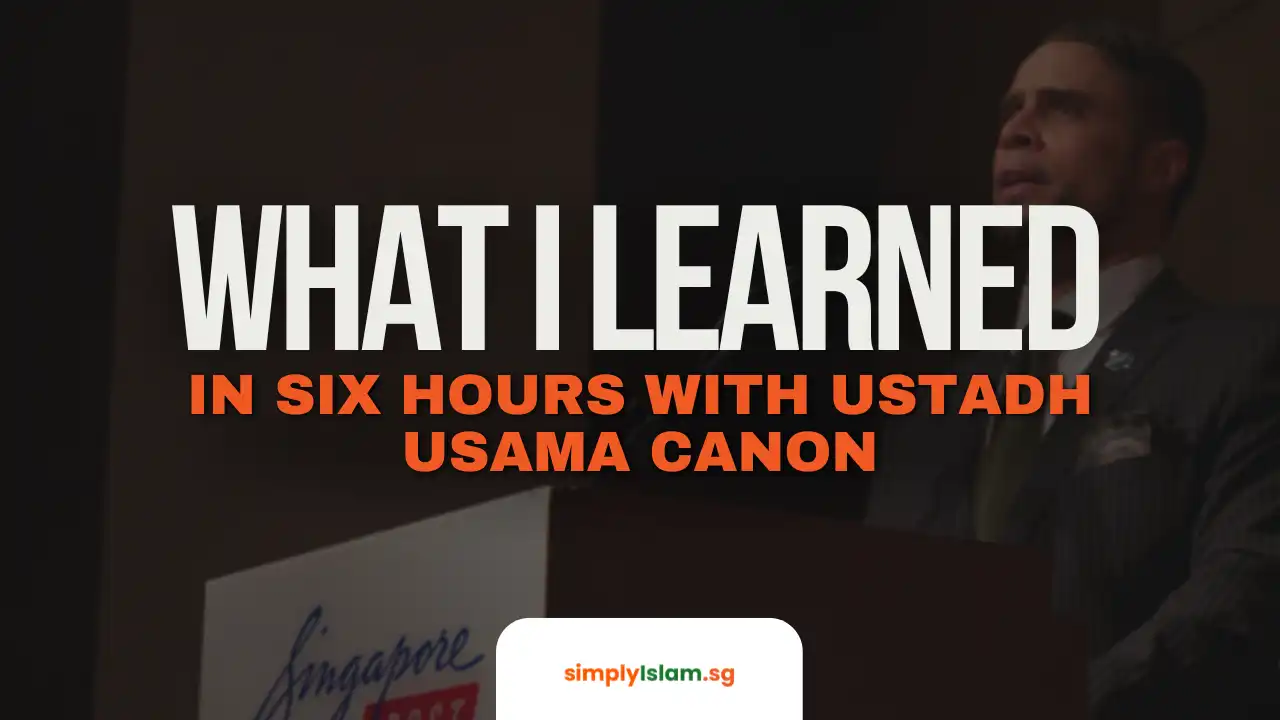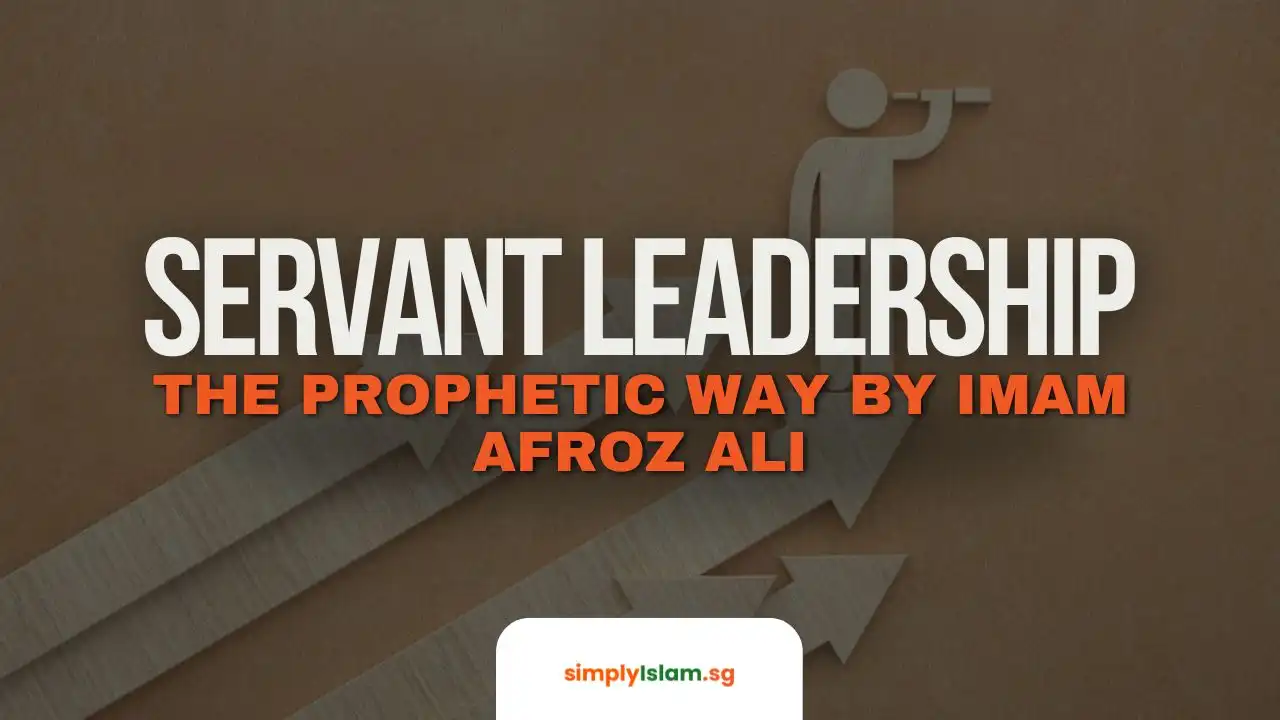
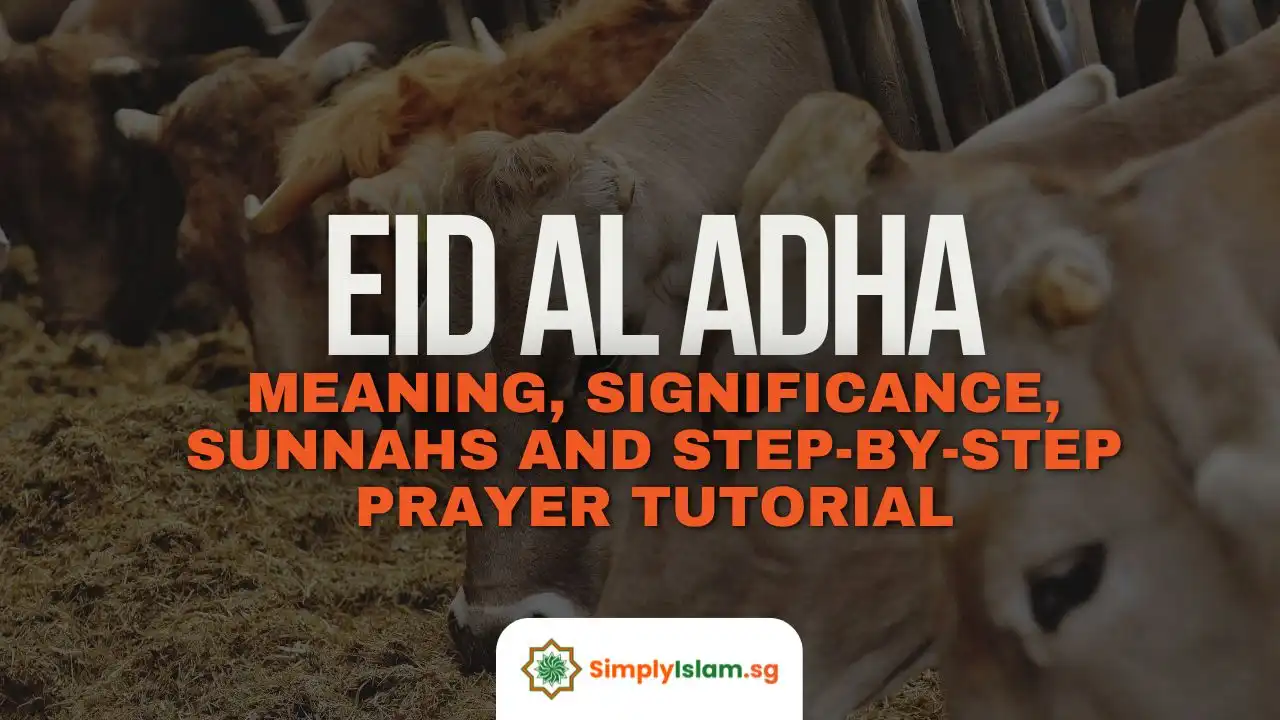
As Eid Al-Adha approaches, we are to remember our annual obligations as Muslims, that is to celebrate the blessed time and perform sacrifice if we have the means to do so. Many Muslims around the world gather to celebrate this blessed occasion.
In this article, we’ll share with you the key components of Eid Al-Adha; the meaning of Eid Al Adha, the significance of Eid Al Adha and the Prophet Ibrahim (as), the Sunnahs to perform on Eid Al Adha, as well as the step-by-step tutorial on how to perform the sunnah prayer on Eid Al-Adha.
What is Eid Al-Adha?
In the Hijri calendar, Muslims typically celebrate two types of Eids in a year; Eid Al-Fitr and Eid Al-Adha. Eid Al-Adha happens after the completion of Hajj, during the time of Qurban or animal sacrifice.
Eid-ul-Adha occurs on the tenth day of Dhu-al-Hijjah, the final month of the Islamic Lunar Calendar. Its date hinges on the sighting of the moon after the completion of the annual Hajj pilgrimage, a fundamental obligation for eligible Muslims and one of the Five Pillars of Islam.
The duration of Eid-ul-Adha festivities varies by country, lasting from two to four days. The ritual of Qurban (animal sacrifice) is performed after the khutbah and Sunnah Eid Salaah (Eid Prayers), performed collectively in mosques on Eid morning.
The Significance of Eid Al-Adha: Story of Prophet Ibrahim (as) and His Sacrifice
You might be wondering, what is the significance of this blessed event and its relation to the story of Prophet Ibrahim (as)?
This celebration honors Prophet Ibrahim’s profound devotion to Allah Almighty and his willingness to sacrifice his son, Prophet Ismail (as). Allah Almighty replaced Prophet Ismail (as) with a ram at the moment of sacrifice, demonstrating Prophet Ibrahim’s (as) unwavering obedience. Eid-ul-Adha, therefore, symbolizes the festival of sacrifice.
The act of Qurban consists of slaughtering an animal as a sacrifice to mark this occasion in remembrance of Prophet Ibrahim’s (as) sacrifice for Allah Almighty. This is also known as Udhiyah. The days of animal sacrifice total three days, from the 10th to the 12th of Dhu-al-Hijjah.
There are many Qur’anic verses on the Prophet Ibrahim (as) and the relation to Qurban:
فَلَمَّا بَلَغَ مَعَهُ ٱلسَّعْىَ قَالَ يَـٰبُنَىَّ إِنِّىٓ أَرَىٰ فِى ٱلْمَنَامِ أَنِّىٓ أَذْبَحُكَ فَٱنظُرْ مَاذَا تَرَىٰ ۚ قَالَ يَـٰٓأَبَتِ ٱفْعَلْ مَا تُؤْمَرُ ۖ سَتَجِدُنِىٓ إِن شَآءَ ٱللَّهُ مِنَ ٱلصَّـٰبِرِينَ
When the boy was old enough to work with his father, Abraham said, ‘My son, I have seen myself sacrificing you in a dream. What do you think?’ He said, ‘Father, do as you are commanded and, God willing, you will find me steadfast.’ [Qur’an 37:102]
فَلَمَّآ أَسْلَمَا وَتَلَّهُۥ لِلْجَبِينِ
“When they had both submitted to God, and he had laid his son down on the side of his face,” [Qur’an 37:103]
وَنَـٰدَيْنَـٰهُ أَن يَـٰٓإِبْرَٰهِيمُ
“We called out to him, ‘Abraham,” [Qur’an 37:104]
قَدْ صَدَّقْتَ ٱلرُّءْيَآ ۚ إِنَّا كَذَٰلِكَ نَجْزِى ٱلْمُحْسِنِينَ
“you have fulfilled the dream.’ This is how We reward those who do good-” [Qur’an 37:105]
إِنَّ هَـٰذَا لَهُوَ ٱلْبَلَـٰٓؤُا۟ ٱلْمُبِينُ
“it was a test to prove [their true characters]-” [Qur’an 37:106]
وَفَدَيْنَـٰهُ بِذِبْحٍ عَظِيمٍۢ
“We ransomed his son with a momentous sacrifice,” [Qur’an 37:107]
وَتَرَكْنَا عَلَيْهِ فِى ٱلْـَٔاخِرِينَ
“and We let him be praised by succeeding generations” [Qur’an 37:108]
سَلَـٰمٌ عَلَىٰٓ إِبْرَٰهِيمَ
“‘Peace be upon Abraham!’” [Qur’an 37:109]
What’s the Difference between Eid Al Adha and Eid Al Fitr?
Narrated Sayyidatina ‘Aishah (RA):
Allah’s Messenger (ﷺ) said: “(‘Eid) al-Fitr is the day on which the people break the fast, and (‘Eid) al-Adha is the day the people offer sacrifices.” [Reported by at-Tirmidhi].
Eid Al-Fitr
Eid al-Fitr, translated as the ‘festival of breaking the fast,’ is observed at the conclusion of Ramadan, a month when all Muslims fast around the world.
This fasting period holds significant spiritual value, allowing Muslims to deepen their connection with Allah Almighty and reaffirm their faith.
Eid al-Fitr typically spans one to three days, varying by country. It marks a transition from the fasting of Ramadan, with fasting being prohibited on Eid day.
Depending on cultures across the globe, the typical Sunnahs during Eid Al Fitr consist of donning new attire, performing Eid Sunnah prayer, listening to the sermon and celebrating with family and friends by indulging in cultural food and visiting relatives.
Eid Al Adha
Eid al-Adha, also known as the ‘feast of the sacrifice,’ occurs approximately two months following Eid al-Fitr, coinciding with the Hajj pilgrimage undertaken by many Muslims.
This festival aligns with the culmination of Hajj, the revered annual journey to Mecca. While Hajj is a mandatory once-in-a-lifetime obligation for financially capable Muslims who haven’t completed it previously, Eid al-Adha is an annual observance embraced by all Muslims.
How do Muslims celebrate Eid Al-Adha? By offering sacrifice for those who have the means to do so, partake in the process of sacrifice such as slaughtering, butchering and cooking meals for the communities, and more.
If you would like to offer Qurban online, make your order now with a single click and help vulnerable families across the globe with a single click.
Sunnahs to Perform During Eid Al-Adha
As a Muslim, we should take this opportunity to maximise our good deeds, especially on blessed ocassions like Eid Al-Adha. Here’s an overview on some of the acts you can perform:
Take a bath or make ghusl
Don beautiful/neat clothes
Apply fragrance
Recite Takbir
Walk to the mosque and use a different route after
Perform Sunnah Eid Prayer
Listen to the Khutbah
Perform Qurban if you have the means to do so
Eat after returning from the mosque
Take a bath or make ghusl
It was narrated that Ibn ‘Abbas said:
“The Messenger of Allah (ﷺ) said: ‘This day is an ‘Eid (festival) which Allah has ordained for the Muslims. Whoever comes to Friday (prayer), let him take a bath and if he has perfume then let him put some on. And upon you (I urge to use) is the tooth stick.” [Sunan Ibn Majah]
Don beautiful clothing
Nafi’ reported: Abdullah ibn Umar, may Allah be pleased with him, would wear his best clothes on the days of the two Eids.
Source: al-Sunan al-Kubrá lil-Bayhaqī 6143
Grade: Sahih (authentic) according to Ibn Hajar
Apply fragrance
Narrated Sayyidatina `Aisha (ra):
I used to perfume Allah’s Messenger (ﷺ) with the best scent available till I saw the shine of the scent on his head and shine beard. [Sahih Al-Bukhari]
Recite Takbir
It was narrated from ‘Abdur-Rahman bin Sa’d bin ‘Ammar bin Sa’d, the Mu’adhdhin, that his father narrated, from his father, that his grandfather said:
“The Prophet (ﷺ) used to say the Takbir between the two sermons and he used to say the Takbir a great deal in the sermon of ‘Eid.” [Sunan Ibn Majah]
Walk to the mosque and use a different route after
Narrated Jabir (RA):
On an ‘Eid day, Allah’s Messenger (ﷺ) would return by a different road from the one he had taken when going out (for the ‘Eid prayer.) [Reported by al-Bukhari].
Perform Sunnah Eid Prayer
It was narrated from ‘Aishah that the Messenger of Allah (ﷺ) said the Takbir seven and five times in (the prayer for ‘Eid) Fitr and Adha, apart from the Takbir for Ruku’ (bowing).
Listen to the Khutbah
It was narrated that ‘Abdullah bin Sa’ib said:
“I attended the ‘Eid prayer with the Messenger of Allah (ﷺ). He led us in offering the ‘Eid prayer, then he said: ‘I have finished the prayer. Whoever wants to sit (and listen to) the sermon, then let him sit, and whoever wants to leave, then let him leave.’” [Sunan Ibn Majah]
Perform Qurban if you have the means to do so
It was narrated from Ibn ‘Umar that the Prophet (ﷺ) used to slaughter at the prayer place (of the ‘Eid congregation). [Sunan Ibn Majah]
Eat after returning from the mosque
It is advisable for Muslism to eat after returning from the mosque, especially those who are performing the sacrifice or Qurban. However, if he is not going to offer a sacrifice, there is nothing wrong with eating before the prayer.
Step-by-Step to Perform Sunnah Prayer on Eid Al-Adha
Step 1: Form the intention to perform the Eid prayer.
أُصَلِّي سُنَّةَ عِيدِ الأضحى رَكعَتَين لِلَّهِ تَعَالَى
Usolli sunnata ‘idil adha rak’ataini lillah ta’ala
“I intend to pray the sunnah prayer of Eid Al Adha two raka’at for Allah, the exalted.”
Step 2: Perform the First Raka’ah
The prayer will commence with the Imam initiating the Takbiratul Ihram (the opening Allahu Akbar), followed by seven additional Takbirs. Subsequently, Al-Fatihah will be recited, followed by another Surah.
Step 3: Perform the Second Raka’ah
Upon standing for the second unit, the Imam will begin with the initial Takbir, followed by five more Takbirs. Following this, Surah Al-Fatihah will be recited, succeeded by another Surah
Step 4: Post-Prayer Sermon
Following the prayer, the Imam will deliver a sermon (khutbah) to the congregation. This sermon typically lasts between 20 to 30 minutes and covers important Islamic topics, making it imperative for attendees to listen attentively.
To recap, Eid al-Adha, also known as the ‘feast of the sacrifice,’ holds deep significance in Islam, commemorating Prophet Ibrahim’s (as) unwavering obedience to Allah’s command. The essence of sacrifice, both in terms of material offerings and spiritual devotion, is central to this celebration.
During Eid al-Adha, there are several recommended acts, or sunnahs, that Muslims observe. These include performing ghusl, eating after the Qurban, dressing in one’s best attire, reciting Takbir on the way to prayer, and following specific steps during the Eid prayer.
In essence, Eid al-Adha is a time of reflection, gratitude, and commitment to obedience and sacrifice in the path of faith. It serves as a reminder of Prophet Ibrahim’s (as) steadfastness and the enduring values of Islam.

